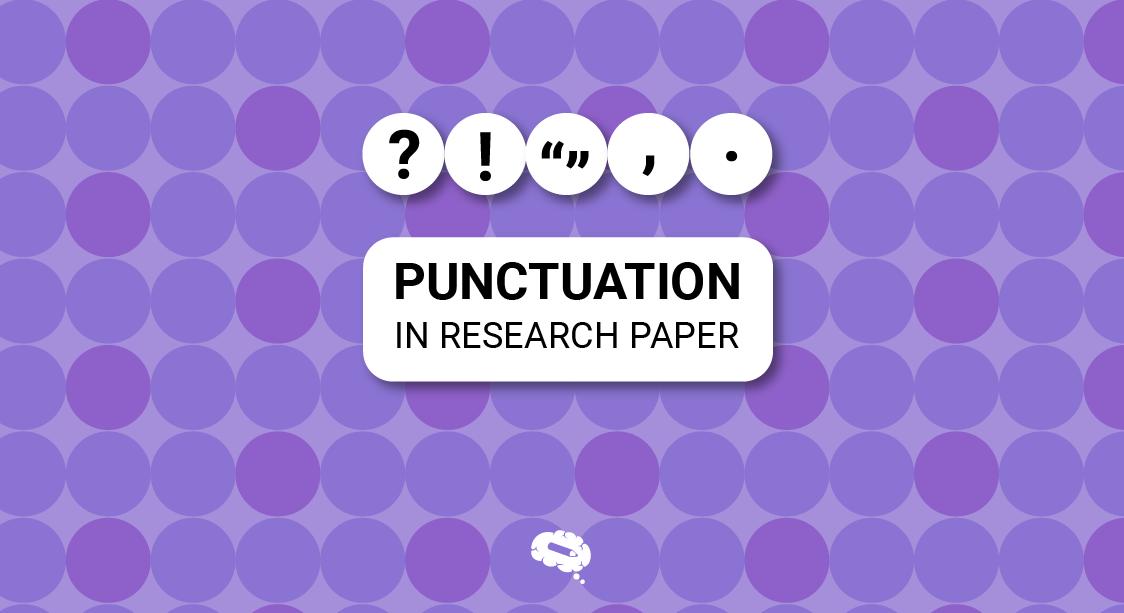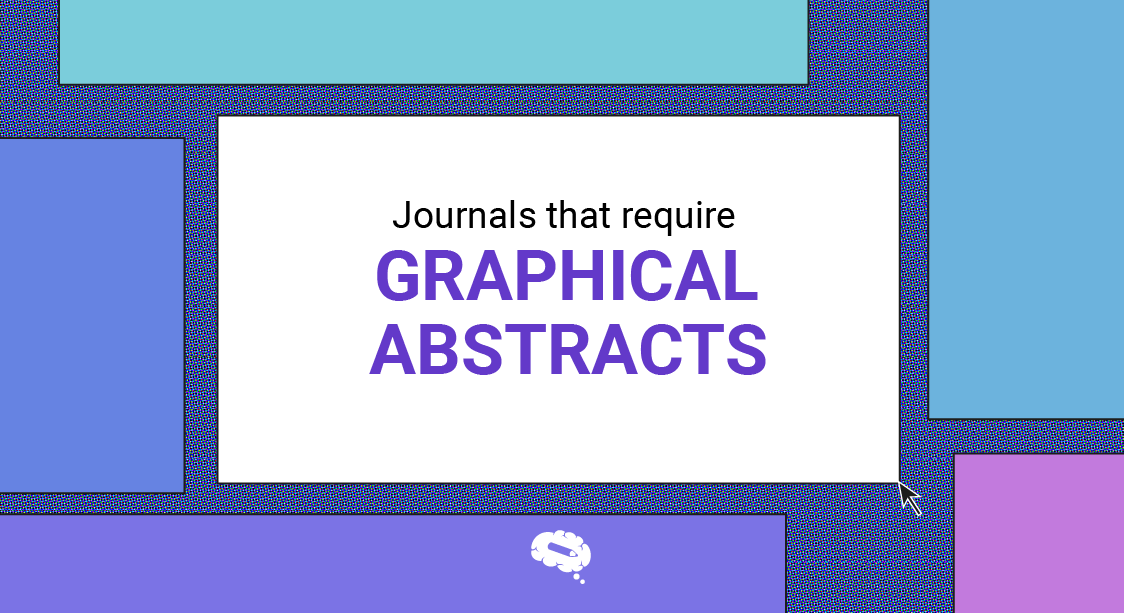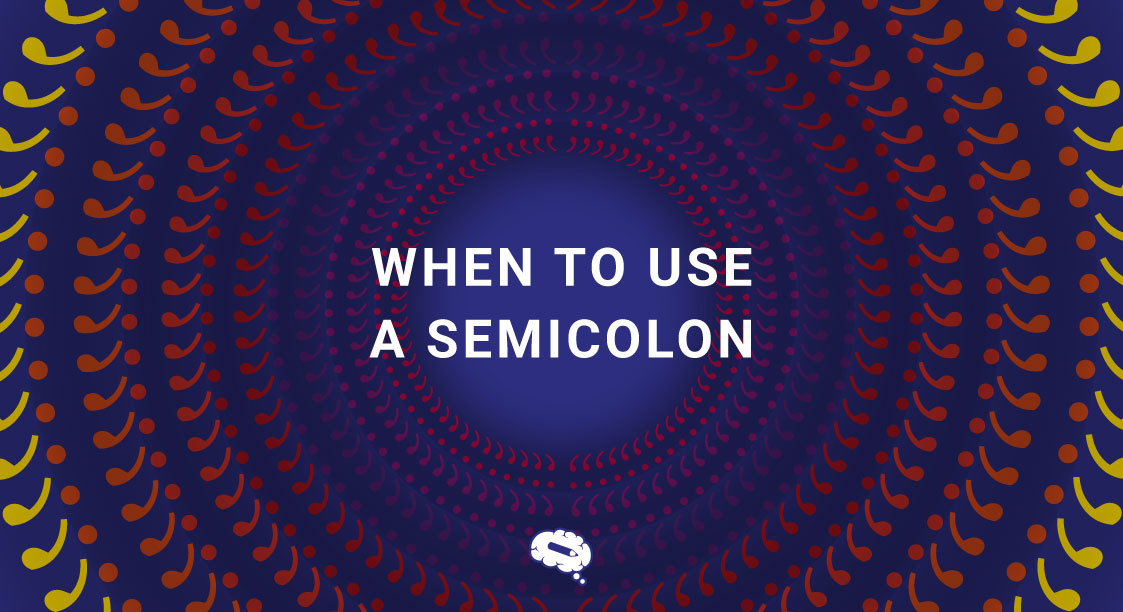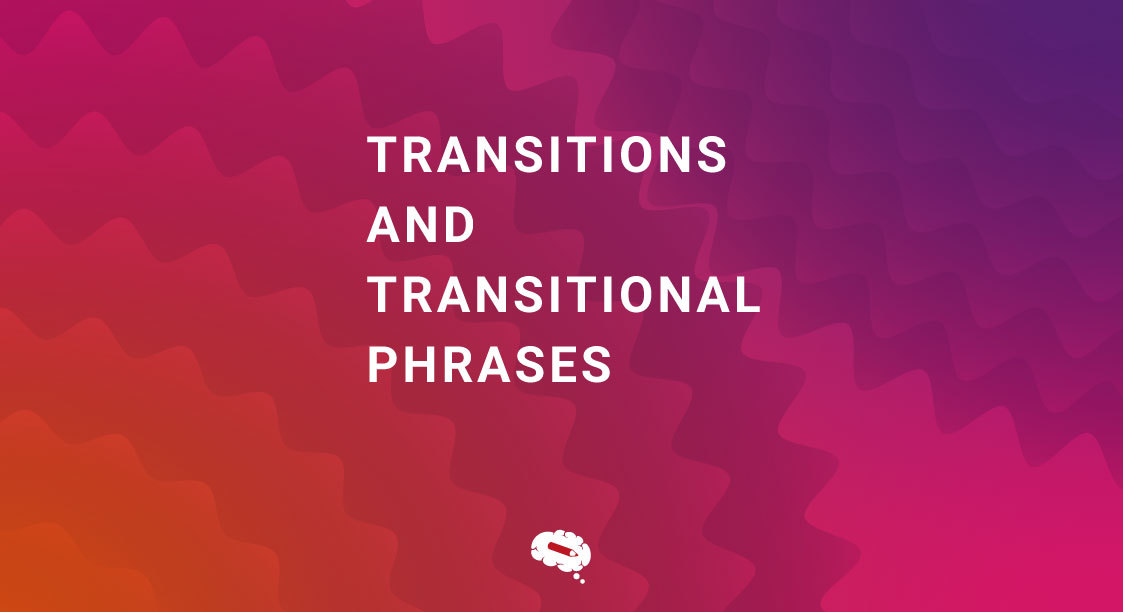Proper punctuation in a research paper is essential for clarity, precision, and professionalism. Correct punctuation not only helps the reader understand the content but also ensures that your arguments are presented logically and coherently. From the correct use of commas and full stops to the appropriate placement of colons and semicolons, mastering punctuation in research paper writing can significantly enhance the readability of your work. In this document, we will delve into the various punctuation marks and their correct usage within the context of academic research, providing practical examples and tips to help you avoid common pitfalls.
Importance of Punctuation in Research Papers
Enhancing Clarity and Precision
Using punctuation correctly in a research paper is vital for enhancing clarity and precision. Punctuation marks act as signposts for the reader, guiding them through the complexities of your arguments and evidence. For instance, commas can break down lengthy sentences, making them easier to comprehend. A missing comma can lead to ambiguous or nonsensical sentences, impacting the clarity of your writing. Full stops signal the end of a complete thought, allowing the reader to pause and absorb information. Colons and semicolons can introduce lists or separate closely related ideas, adding nuance to your writing. Misplaced or missing punctuation can lead to confusion, misinterpretation, and a lack of coherence. Therefore, attention to punctuation not only improves readability but also ensures that your scientific arguments are conveyed accurately. By mastering punctuation, you can present your research more effectively, making it accessible and persuasive to your academic audience.
Avoiding Misunderstandings
Punctuation plays a crucial role in avoiding misunderstandings in a research paper. Common comma mistakes can cause misunderstandings and alter the intended meaning of your sentences. Incorrect or inconsistent use of punctuation can alter the meaning of a sentence, leading to potential misinterpretations. For example, a misplaced comma can change the entire context of a statement, causing confusion among your readers. Similarly, the absence of a full stop might merge two distinct ideas, muddling your arguments. Properly used punctuation marks like colons and semicolons help to clearly separate and connect ideas, ensuring that the logic of your paper is easy to follow. Additionally, quotation marks and parentheses can provide context, clarify references, and add important supplementary information without disrupting the main narrative. By paying careful attention to punctuation, you can minimize the risk of misunderstandings, ensuring that your research is communicated clearly and accurately to your audience.
Improving Readability
Improving readability is one of the primary functions of proper punctuation in a research paper. Well-placed punctuation marks help break down complex information into manageable chunks, making your paper easier to read and understand. Introductory phrases, commonly used in academic writing, can separate adverbial or transitional phrases from the main clause to develop a line of argument. For instance, commas can be used to separate items in a list, making it clear that each item is distinct. Full stops indicate the end of a thought, providing a natural pause for the reader to digest the information. Hyphens and dashes can create emphasis or clarification within a sentence, enhancing understanding. Moreover, colons can introduce explanations or lists, signaling to the reader what to expect next. By carefully using punctuation, you can control the flow of your writing, making it more engaging and less daunting. This not only keeps your readers interested but also helps them grasp the nuances of your research more effectively.
Common Punctuation Marks
Full Stops and Commas
Full stops and commas are among the most frequently used punctuation marks in research papers. Full stops, or periods, signify the end of a sentence, providing a clear boundary between separate ideas. This makes your writing more digestible and allows readers to pause and reflect on each point. Commas, on the other hand, serve to separate elements within a sentence. They can list items, separate clauses, or provide breaks in complex sentences to enhance readability. For example, in a compound sentence, a comma before a conjunction like “and” or “but” helps clarify the relationship between the two clauses. Misusing commas can lead to run-on sentences or sentence fragments, which disrupt the flow of your writing and confuse the reader. By mastering the use of full stops and commas, you can significantly improve the clarity and coherence of your research paper.
Additionally, the Oxford comma, which is placed before the final ‘and’ or ‘or’ in a list of items, is crucial for avoiding ambiguity. While it is mandatory in American English, it is used in British English primarily for clarity. Consistent use of the Oxford comma within a manuscript ensures that lists are clear and unambiguous.
Semicolons and Colons
Semicolons and colons add depth and complexity to your research paper. In technical writing, semicolons and colons are essential for clear and precise communication. Semicolons are used to link closely related independent clauses, creating a smoother transition than a full stop. For instance, “The experiment was successful; the results were conclusive” uses a semicolon to connect two related ideas without the abruptness of a full stop. Colons, in contrast, introduce lists, explanations, or quotations. They signal that what follows will elaborate on the preceding clause. For example, “The study focused on three areas: climate change, pollution, and conservation.” Colons can also introduce a statement or a quote that directly relates to the preceding text, adding emphasis and clarity. Misplaced semicolons and colons can confuse readers and disrupt the flow of your work. Correct usage of these punctuation marks can enhance the structure and readability of your research paper, making your arguments more compelling and easier to follow.
Parentheses and Brackets
Parentheses and brackets are useful tools for adding supplementary information without disrupting the main narrative of your research paper. Parentheses are often used to include non-essential information, such as additional explanations, citations, or clarifications. For example, “The results were significant (p < 0.05), supporting the hypothesis.” This extra information helps to expand on your point without breaking the flow of the text. Brackets, on the other hand, are typically used for editorial comments, corrections, or translations within quoted material. For instance, “The author stated, ‘The results were inconclusive [due to a lack of data].'” Using brackets ensures that the original meaning of the quoted text is preserved while providing the necessary context for the reader. Misusing these punctuation marks can lead to confusion and disrupt the coherence of your paper. Proper use of parentheses and brackets can enhance the readability and precision of your academic writing.
Punctuation in Citations and References
In-text Citations
In-text citations are a fundamental aspect of academic writing, providing credibility and context to your research paper. Proper punctuation is essential in in-text citations to ensure clarity and adherence to academic standards. Different citation styles, such as APA, MLA, or Chicago, have specific punctuation rules. For example, in APA style, a typical in-text citation might look like this: (Smith, 2020). The comma separates the author’s surname and the publication year. In MLA style, a citation appears as (Smith 2020), without the comma. Punctuation also plays a role when incorporating citations within the text. For instance, “According to Smith (2020), the results were conclusive,” uses parentheses to include the citation seamlessly within the sentence. In-text citations must be punctuated correctly to maintain the flow of your writing and ensure that readers can easily locate your sources. Proper punctuation in citations contributes to the professionalism and credibility of your research paper.
Reference List Entries
Reference list entries must be meticulously punctuated to ensure accuracy and consistency in your research paper. Different citation styles dictate specific punctuation rules for listing references. For instance, in APA style, a typical reference might look like this: Smith, J. (2020). The impact of climate change. Journal of Environmental Studies, 12(3), 45-67. Here, commas separate the author’s surname and initials, the publication year, and the title. Italics are used for the title of the book or journal, followed by commas and full stops to separate other elements. In MLA style, the format is slightly different: Smith, John. The Impact of Climate Change. Journal of Environmental Studies, vol. 12, no. 3, 2020, pp. 45-67. Commas and periods are used to separate the elements, with italics for the title. Proper punctuation in reference list entries ensures that your sources are easy to locate and verify, contributing to the credibility and professionalism of your research paper.
Quotation Marks Usage
Quotation marks are essential for indicating direct quotes and borrowed phrases in a research paper. Proper usage of quotation marks ensures that the reader can distinguish between your original ideas and those of other authors. In British English, single quotation marks (‘ ’) are typically used, with double quotation marks (“ ”) reserved for quotes within quotes. For example, ‘Smith (2020) states, “The data clearly shows…”’. Punctuation marks like full stops and commas should be placed outside the closing quotation marks unless they are part of the quoted material. When incorporating quotations, ensure that they are introduced and integrated smoothly into your text. For instance, “According to Smith (2020), ‘The data clearly shows…’” provides context and clarity. Proper use of quotation marks not only gives credit to original authors but also helps maintain the integrity and readability of your research paper.
Punctuation in Complex Sentences
Handling Compound Sentences
Handling compound sentences correctly is vital for maintaining clarity and coherence in your research paper. A compound sentence consists of two or more independent clauses joined by a coordinating conjunction (such as “and,” “but,” or “or”) or a semicolon. Proper punctuation is crucial to signal the relationship between these clauses. For example, “The results were significant, and the hypothesis was confirmed” uses a comma before the conjunction to separate the two independent clauses. If the clauses are closely related but do not require a conjunction, a semicolon can be used: “The results were significant; the hypothesis was confirmed.” Misplacing punctuation in compound sentences can lead to run-on sentences or comma splices, which disrupt the flow and readability of your paper. By mastering the punctuation of compound sentences, you can present complex ideas more clearly and ensure that your arguments are easily understood by your readers.
Using Punctuation in Lists
Using punctuation in lists is essential for clarity and organization in your research paper. Lists can be either bulleted or numbered, and the punctuation used can vary depending on the style guide you are following. In a sentence, commas are commonly used to separate items in a simple list: “The study examined air quality, water pollution, and soil erosion.” For more complex lists, semicolons can be used to separate items, especially if the items themselves contain commas: “The study examined several factors: air quality, affected by industrial emissions; water pollution, influenced by agricultural runoff; and soil erosion, caused by deforestation.” When listing items with bullet points, each item can start with a capital letter, and full stops are used at the end if the items are complete sentences. Proper punctuation in lists ensures that your information is presented clearly and logically, making it easier for readers to follow your arguments and findings.
Managing Subordinate Clauses
Managing subordinate clauses effectively is crucial for maintaining clarity and coherence in your research paper. To achieve this, it is important to use proper punctuation to separate subordinate clauses from the main sentence clauses. Subordinate clauses, also known as dependent clauses, provide additional information but cannot stand alone as complete sentences. They are usually introduced by subordinating conjunctions such as “because,” “although,” or “which.” Proper punctuation helps to integrate these clauses seamlessly into your writing. When a subordinate clause precedes the main clause, a comma is typically used to separate them: “Although the experiment was challenging, the results were promising.” However, if the subordinate clause follows the main clause, a comma is often unnecessary: “The results were promising because the experiment was meticulously conducted.” Misplacing punctuation in subordinate clauses can lead to confusion and disrupt the flow of your writing. By correctly managing subordinate clauses, you can enhance the readability and precision of your research paper, ensuring that your complex ideas are conveyed clearly.
Common Punctuation Mistakes
Misplaced Commas
Misplaced commas are common punctuation mistakes that can significantly affect the clarity and readability of your research paper. Commas are used to separate elements within a sentence, but placing them incorrectly can lead to confusion and ambiguity. For example, “The results, were significant” incorrectly places a comma between the subject and the verb, disrupting the sentence flow. Another common error is the comma splice, where two independent clauses are joined by a comma without a coordinating conjunction, as in “The experiment was successful, the results were inconclusive.” This should be corrected by using a semicolon or a conjunction: “The experiment was successful; however, the results were inconclusive.” Omitting necessary commas can also cause confusion, such as in lists where items run together. By paying close attention to comma placement, you can avoid these common pitfalls and ensure that your research paper is clear and easy to understand.
Overuse of Exclamation Marks
Overuse of exclamation marks is a common punctuation mistake that can undermine the professionalism and seriousness of your research paper. Exclamation marks are typically used to express strong emotion or emphasis, which is rarely appropriate in academic writing. For instance, writing “The results were astounding!” might convey enthusiasm, but it can make your paper seem informal and less credible. Instead, academic writing should rely on clear language and logical arguments to emphasize points. If emphasis is needed, consider using italics or bold text sparingly. Overusing exclamation marks can also make your writing appear subjective, detracting from the objective tone required in research papers. To maintain a professional and authoritative tone, it is best to avoid exclamation marks altogether unless they are part of a direct quote. By doing so, you ensure your paper remains focused, precise, and credible.
Incorrect Apostrophe Usage
Incorrect apostrophe usage is a frequent punctuation mistake that can detract from the professionalism of your research paper. Apostrophes are primarily used to indicate possession or to form contractions. For possession, the apostrophe is placed before the “s” for singular nouns (“the student’s book”) and after the “s” for plural nouns (“the students’ books”). A common error is using an apostrophe to form plurals, which is incorrect: “The result’s were significant” should be “The results were significant.” Similarly, contractions such as “it’s” for “it is” should not be confused with the possessive “its.” Misplacing apostrophes can lead to ambiguity and misunderstandings. For example, “The researchers’ data” correctly indicates data belonging to multiple researchers, while “The researcher’s data” implies it belongs to one researcher. By ensuring correct apostrophe usage, you can enhance the clarity and credibility of your academic writing.
Create Impactful Scientific Illustrations with Mind the Graph
Mind the Graph is the ultimate tool for scientists and researchers seeking to create visually striking and scientifically accurate graphics. With an extensive library of customizable templates and illustrations, you can easily transform complex data into clear, engaging visuals. Ideal for presentations, posters, and research papers, Mind the Graph helps you communicate your findings effectively and captivate your audience. Elevate your scientific communication today – sign up for free and start designing!

Subscribe to our newsletter
Exclusive high quality content about effective visual
communication in science.











